THE SISTERHOOD OF THE TRAVELING PANTS 2
By Allison Ko, 16, Wilson HS (Hacienda Heights)
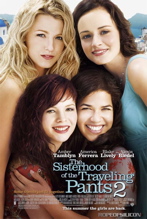
When I first saw the trailer for The Sisterhood of the Traveling Pants 2, I thought “Oh great, not another one of these corny chick flicks.” My friends, however, insisted on how great the first movie was (which I’d never seen), so we decided on a girls’ night out to watch the sequel. And let me tell you, I’m glad we did.
After doing some research, I learned that the first movie was about four friends, Lena (Alexis Bledel), Carmen (America Ferrera), Tibby (Amber Tamblyn) and Bridget (Blake Lively) finding a pair of pants that fits each of them perfectly. This magical pair of pants becomes a symbol of their friendship, as they send it to each other through FedEx, no matter where they are so that their sisterhood is always intact. In the sequel, the girls enter the exciting world of college and go their separate ways, developing their own interests and experiences. The movie is about the four trying to maintain their friendship, on top of struggling to deal with individual problems. The pants-sending remains a common ritual, but because each girl is dealing with her own dilemmas, the pants seem unimportant. The girls toss them aside whenever they arrive in the mail, treating them like an average pair of pants.
The story covers different themes—family, friendship and love—and that’s what I liked about it. It covers Lena’s struggle to find true love, whether it be in the United States or as far away in Greece; Carmen’s newly-discovered talent in acting and whether or not her newfound crush, Ian (Tom Wisdom) is feeling the same for her as she is for him; Bridget’s family secret; and Tibby’s hesitant decision to break up with her boyfriend Brian McBrian (Leonardo Nam). It sounds like a lot is going on in the movie, but the story progressed smoothly. It seemed realistic as the girls went through problems and grew up on their own.
In the end, the friendship was reconnected as they discovered that they would always have one another. The pants brought them together once again, allowing the girls to truly appreciate their friendship while learning to be themselves.
The chemistry between the four characters in the movie was so genuine that it didn’t even feel like a movie. The characters reminded me of my own friends and some of the ups and downs we’ve gone through. Walking out of the theater, my three friends and I began to compare the characters in the movie to one another, saying things like, “Oh, you’re SO Lena!” or “You reminded me so much of Carmen.” I think what made this movie more meaningful was that I watched it with my three best friends, and what a coincidence (or maybe, fate) it was that the film was about four young women and their friendship.
Linking arms, we blissfully said to one another, “Let’s go get us some pants.”
AMERICAN TEEN
By Alex Key, 16, City of Angels HS
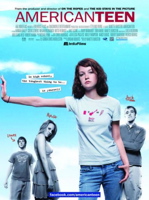
Everybody has problems in high school, from the nerdy kid to the popular queen bee. High school is hard.
For the past few years, some of the biggest movies have been independent coming of age “dramadies.” My generation has had Napoleon Dynamite, Juno, and most recently The Wackness (which you should go see). In the 80’s, The Breakfast Club and Sixteen Candles had top bill. Today, documentaries are getting in on the bankable trend by making their real-life footage represent the same idea: “everybody has problems.”
The documentary American Teen was shot in the small town of Warshaw, Indiana, one of those towns where there’s only one high school. The students featured in the documentary are whom you’d expect—there’s a nerd, a popular girl, two jocks and the odd one out. Even though this is starting to sound like something you’ve seen a hundred times before, American Teen really is refreshing. It’s fresh, because the people onscreen aren’t scripted. That’s real, live angst you’re seeing.
I rooted for Hannah, the odd one out, who wants to move out of her small town, and be a director. She lives with her grandmother. Her mom is manic depressive. I cried when Amanda, the queen bee, opens the acceptance letter from the college her entire family has gone too. I laughed when Jake, the band nerd, got drunk in Mexico, because his older brother “just wanted to see how he would act.”
American Teen pulled at all of my emotions (as any good flick about high school should). The film was packed with awkward moments that made me laugh, only because I’ve been there before, like being embarrassed by my parent’s eccentricities (Colin’s dad dressing up as Elvis); plus, there were sad parts like Hannah’s parents saying she can’t move to Los Angeles. People at my screening were actually booing the screen and crying when this happened, because she realizes this is the first time she gets to exert her independence and make an adult decision.
Through animated sequences sprinkled throughout the film, we get to see what the characters are really thinking and feeling via their cartoon versions. These vignettes are always interesting and mostly funny, although one is a little creepy.
There are some clichéd scenes—girl longingly looks into camera with a sad face for 45 seconds—but American Teen more than makes up for it. The teens know where they stand in the social hierarchy. They vocalize their problems. They aren’t afraid to put themselves out there.
Though American Teen has mainstream appeal, the film isn’t getting the love it deserves, which is understandable. When a promotional poster for an independent documentary has titles of decades past big budget fictional teen dramas like the Breakfast Club on it, a person can easily become confused. It shouldn’t just be targeted to the 18-24-year-old audience. I hope people give it the chance it deserves.
Notes from the American Teen screening
Director Nanette Burstein ran with the idea that we like to see ourselves at our worst (which for a lot of us is high school) onscreen through somebody else’s eyes, because when they prevail, it’s that much sweeter. The story had been in her head for 10 years. During high school, she said she went through many transitions; she played all of the clichéd roles. She wanted to put together a story that was true to the high school experience, so she made the documentary American Teen.
After picking Warshaw, Indiana, Burnstein interviewed a third of the incoming senior class. Her original cast consisted of 15 teens, whom she thought represented the high school experience well. After editing the more than 1,200 hours of footage she knocked the 15 down to five, and she filmed them throughout their senior year.
The students told the audience at the screening they didn’t think American Teen would go anywhere. Hannah, the artsy girl, participated because “she would get to be around a film crew” (she wants to become a director). Mitch, the loveable jock, thought of the film as a “living yearbook.” Other participants did it because of their “boring town.” Jake, the nerd, said “I never expected it would go this far. I didn’t think I was interesting enough.” All of them said that they liked the way they were portrayed in the film.
Although, they weren’t filmed everyday, the participants said that they got used to the cameras after a month. Colin, one of the jocks, said he “was always looking directly into the camera. They couldn’t use my first two weeks of footage because of it.” The hardest parts for them to watch were their “high school mistakes” and the infamous “text message break up.”
When asked how they reacted to each other in high school the audience found out they didn’t know each other. In fact, before going to the Sundance film festival to premiere the documentary earlier this year, most of the cast didn’t even know one another.
Someone from the audience asked Colin, “What was going to college like for you (the students graduated high school in 2005)?”
“Like going back to high school again,” he answered.
Would you guys ever do high school again? The cast gave a unanimous “NO.”
—Alex Key
THE DARK KNIGHT
By Angela Wu, 17, Walnut HS

I am writing this review after having seen The Dark Knight three times. Each time I walked out of the theater, I found myself agreeing with someone that The Dark Knight is probably the best comic book movie ever.
It isn’t a typical comic book movie. Maybe it’s because Batman doesn’t have superpowers, but everything about this movie felt incredibly real to me. Director Christopher Nolan generally left out the CGI in favor of actual stunts, with one scene where Christian Bale as Batman is actually standing at the edge of a building overlooking Gotham. The image took my breath away, especially in IMAX. During the scenes in which Batman glides through the city, I was almost waiting for my seat to tilt as I plummeted with him.
Heath Ledger did the same with the Joker, making him more real—and as a result, darker. He nailed it with the maniacal laugh, the pointed way he spoke by enunciating all syllables, and the small facial twitches here and there. Ledger’s grungy Joker, with his greasy hair and melting makeup, felt like someone you might run into on the street if you were unlucky, not the colorful villain of the original comics with his acid-spewing flowers and laughing gas. The familiar glint of the Joker’s collection of knives is terrifying because of its simplicity. Even after watching it three times, I’m not sure if the movie shows him carving someone’s face because I’ve kept my eyes covered every time.
In this movie, the villain wasn’t simply a foil to the hero. The Dark Knight portrays the complex, almost symbiotic relationship between the two characters. Batman is a symbol of incorruptible good; the Joker is a symbol of the consummate evil—purposeless and sociopathic. As the Joker eloquently puts it as he dangles upside down over Gotham, “This is what happens when an unstoppable force hits an immovable object.”
Key to the relationship between Batman and the Joker is District Attorney Harvey Dent’s transformation into Two-Face, another villain. After he is badly disfigured, Dent, who was considered The White Knight who would save Gotham, becomes a combination of both good and evil. But while Aaron Eckhart played both characters equally well, he wasn’t able to portray the sudden change believably, though that may have been the script’s fault. Two-Face’s motivation just wasn’t convincing to me.
Maggie Gyllenhaal, who replaced Batman Begins’ Katie Holmes as Rachel Dawes, wasn’t believable either, mostly because there was no chemistry between her and Bale. Her performance was best in her scene with the Joker, and it was a scene she only had one line in. Though it clocks in at two-and-a-half hours, The Dark Knight may seem long, but I was so engrossed in the story that I only checked the time once. But Nolan’s frequent cutting between different scenes and storylines makes the movie more complicated than necessary and as a result, more difficult to understand. But like Batman and the Joker, all the different stories in the movie complete each other in the end.
In some ways, from the shrieking siren sound accompanying all the Joker’s appearances to the power he seemed to hold over Batman, I felt like The Dark Knight was more focused on the Joker than on Batman. It seemed like all the other characters spent the entire movie trying to catch up with the Joker. But it worked, because the movie, in a departure from the classic comic book movie playbook, wasn’t attempting to portray Batman as the hero. Bruce Wayne’s butler Alfred, played by Michael Caine, says, “That’s the point of Batman. He can be the outcast. … He’s not being the hero. He’s being something more.”
That’s the story that fans of the Caped Crusader have been waiting for. That’s Batman.
THE DARK KNIGHT
By Se Kim, 17, Senior writer, Pacifica Christian HS (Santa Monica)
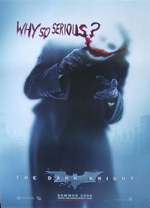
Although The Dark Knight had a lot of things in common with typical superhero movies—eye-candy special effects, lots of action, a fast-paced story—The Dark Knight showed me that Superhero movies could be Oscar-worthy.
At the beginning of the movie, Batman’s (Christian Bale) crime-stopping has caused crime to decrease in Gotham. As the movie goes on, crime and terror increase with the emergence of the Joker, played by Heath Ledger, who unlike other criminals doesn’t care about money and power. He just wants to terrorize.
Batman’s main goal is to make Gotham a safer place, but in doing so he motivates the Joker and makes Gotham less safe. This showed that Batman can’t do everything, which allowed me to connect with him. Batman tries to stop the Joker but ironically this causes more problems. The Joker wants Batman to reveal his true identity and says he won’t stop killing until he does.
When Batman comes up with a plan to fight the Joker that involves invading the privacy of all of Gotham’s citizens, I felt it was a difficult choice between security and liberty. This unexpected dilemma represented our country’s current controversy over how we fight the war on terror.
The plot may be strong, but the characters carry the movie. Ledger’s performance as the Joker was dark and compelling and his portrayal of a psychotic killer sent shivers down my spine.
Meanwhile, Bruce Wayne (Batman) is caught in a love triangle with Rachel Dawes, his childhood friend, and new District Attorney, Harvey Dent played by Aaron Eckhart. The love triangle can be a bit confusing at times, but it shows how Bruce is torn between Rachel, who represents stability, and his desire to save the city as Batman. Facing this question shows that he’s human too.
Although the hype leading up to the summer blockbuster may have been a little exaggerated due to Ledger’s death, the movie exceeded all expectations and amazed even a disinterested-superhero person like me.
WALL-E By Alana Folsom, 17, Marshall HS (2008 graduate)
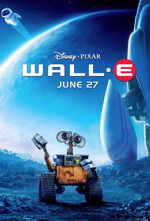
Wall-E is unlike any of its Pixar predecessors. Yes, it has the heartwarming plot, the meticulous animation and the funny jokes. But the witty pop culture references are replaced with an examination of human culture à la a dirt-encrusted robot. Yet this portrait of a post-apocalyptic world remains upbeat because of Wall-E, a robot whose endearing beeps and sighs make you smile despite the depressing surroundings of a garbage-covered Earth.
While the opening 30 minutes are haunting in their lack of dialogue and barren visual depictions of Earth, I was mostly intrigued and amused by Wall-E and his interactions with his cockroach friend. As I saw the towers of trash I was also upset at American over-consumption. The movie is eerily believable with its allusions to the landfills of today and superstores (Buy n Large) like Wal-Mart.
But most importantly Wall-E is a love story between two robots. It is when Eve enters Wall-E’s life that the movie fleshes out. Wall-E’s timid courting of the technologically superior Eve (who is dropped on Earth to find life) makes him even more lovable. The two robots forge a tug-at-the-heart-strings connection entirely through an exchange of names and robot hums. When Wall-E presents Eve with the one plant he found the plot thickens.
Soon Wall-E snags a ride up to the spaceship where the humans laze until Earth is clean again, and Pixar’s social commentary hits you between the eyes. Humans have ballooned and move around in hover-chairs, they mindlessly follow what the virtual ads tell them (changing their clothes from red to blue at the push of a button), and are oblivious to their surroundings save for the computer screen inches in front of their corpulent faces.
Wall-E and Eve take on new roles once they get to the ship. Cue Pixar’s favorite character transition: these two unlikely robots become rule-breaking rebels (all while maintaining their fledgling relationship and ingratiating themselves with the humans).
Wall-E is both lighthearted and profound. It makes you laugh and reexamine the way you live and react with your surroundings. And this movie, which I feared would break the Pixar chain of success with its clichéd “robot tries to save Earth” plot, is anything but. It is a refreshing new attitude for animation, both serious and entertaining. Wall-E is the best movie of 2008 so far.
WALL-E By Devin Ruiz, 17, Ramona Convent (Alhambra)
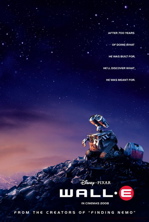
A movie with virtually no dialogue for the first 30 minutes might usually bore me, but Pixar’s latest movie, Wall-E, amazed me. I felt his innocent wonder when he discovered a spork and a Rubik’s cube, and when he rocked himself to sleep it was total awwwwwww.
What made Wall-E different from other Pixar characters like Buzz Lightyear or Woody is his inability to speak. But what Wall-E lacked in words he made up for in the emotions he expressed through his wide, metal eyes. As a Pixar film the story is explained through amazing colors and life-like animation.
Wall-E takes place 700 years from now when no one lives on Earth because it’s covered with trash. Wall-E, and other robots like him, were left on Earth to help clean up and make the Earth livable once again. Meanwhile the human race lives on a spaceship and people have forgotten what it’s like to live or support themselves, even in the most literal way—walking.
While compacting humanity’s trash Wall-E meets another robot, Eve, who was sent to find plants on Earth. He falls in love with Eve and follows her to the spaceship. Together Eve and Wall-E help the humans realize their error, and ultimately teach the audience a lesson.
This film is not only an adorable love story, but we also get a glimpse at what our world is becoming. Although the plot focuses on the robots, another key character is the Orwellian company Buy n Large. This “character” doesn’t have any lines, but is constantly there—it’s a superstore, gas stations, transportation center, food in a cup. Buy n Large plays a part in the human downfall, constantly pushing products on people convincing them to buy more and larger quantities of everything. Humanity’s consumerism makes people forget about the place they came from, what the “sea” is and they even had to have “Earth” defined.
Although this scenario seems extreme—we aren’t sitting on floating chairs because we’re incapable of walking—it is real enough to see that we could end up there so focused on ourselves that we forget about the world and other people. Wall-E becomes an amazing movie when you realize that there is a deeper level. The non-speaking robot Wall-E separates this movie from other animated movies, and makes it one of my favorite animated movies that I can see over and over again.
GET SMART
By Mindy Gee, Senior Writer, 18, Los Angeles Center for Enriched Studies (2008 graduate)
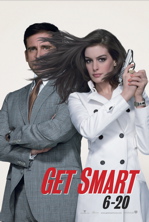
A spontaneous trip to the movie theater with my friends led me to watch Get Smart, which luckily went beyond my expectations for a film we chose at random. Steve Carell plays an analyst for CONTROL, a spy agency attempting to crack down on KAOS’s involvement with nuclear weapons. When Maxwell Smart (Carell) gets promoted from his desk job to field agent, his dream post, he partners up with the far more experienced Agent 99 (Anne Hathaway).
Max means well, but his inexperience causes him to make silly mistakes along the way. On his first day in the field, Max almost blows the mission by accidentally ejecting himself from a plane without a parachute, requiring the help of Agent 99 to safely land at the drop site. At another point he temporarily passes out after shooting himself with one of his gadgets.
The dialogue is witty and reveals Max’s quirky awkwardness, which often provides relief after emotional scenes. Carell’s delivery of Max’s personality makes the film a comedy instead of leaving it as just another spy movie. However, there are parts where the humor does not come off as amusing. The secret entranceway to a CONTROL meeting place involves going by a tree with an agent inside, and then walking on a fake duck pond that opens to a meeting hall. This process of entering the building secretly is not at all discreet and is strange at best. Another thing that doesn’t quite work in the movie is the love story between Max and Agent 99, which is predictable from the start, but is not as developed or as believable as it could have been.
Although several parts in the film are unrealistic and the predictable plot keeps the movie from being great, Max’s interactions with the other characters, especially with his partner, provide humorous scenes that make Get Smart entertaining.
THE STRANGERS
By Kevin Ko, 13, Wilson HS (Hacienda Heights)
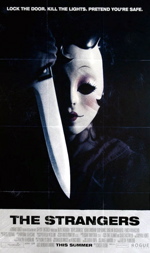
Do you like movies that have absolutely no storyline, no meaning and make no sense? Then The Strangers is just the movie for you.
The movie begins with James (Scott Speedman) being rejected when he proposes to his girlfriend, Kristen (Liv Tyler). Afterwards, they go to James’ house in the woods, where he planned to have a good time with his wife-to-be. The first 20 minutes consist of the couple sitting and sighing heavy. There’s no talking. To make matters even more awkward, James chugs the bottle of champagne, which was meant to celebrate their wedding plans, right in front of his girlfriend.
At this moment, there is a sudden knock at the door. The teenage girls in the audience filled the theater with their extremely annoying high-pitched screams. Kristen opens the door and a girl (whose face is hidden by a shadow) just stands there. Kristen stares and shuts the door quickly.
The fun begins when James leaves to get Kristen cigarettes. A man with a bag over his face appears almost right after, looking through the window. The people in the audience, half adults and the other half kids who snuck in, all scream.
Somehow the masked people get into the house. James is caught and tied up while Kristen continues to run. The rest of the movie consists of the same concept over and over again. Girl runs from man with bag over his face, girl runs from lady with doll mask, girl runs from teenage girl with mask over her face.
I soon lost interest and I know I wasn’t alone. Most people had stopped screaming and many people were texting friends with their phones. I mean come on, seeing someone with a mask on their face gets pretty old after the 15th time.
Just when I thought the movie couldn’t have anything stunning in it, it did. It ended without explaining who the strangers are, why they attack and why they wear those weird masks over their faces.
The Strangers will probably give you chills, but it won’t give you your money’s worth. If you’re like those really annoying teenage girls with the high-pitched screams, who get scared at a simple knock on a door, then yes this movie may be scary. But if you are like me, you’ll get one or two chills when one of the strangers walks around the house looking for the boyfriend, accompanied by the eerie music in the background.
I would never recommend this movie to a friend, an enemy or a random person. Watching this movie is probably worse then being killed by those people with potato sacks over their faces. OK, maybe not, but you get my point.